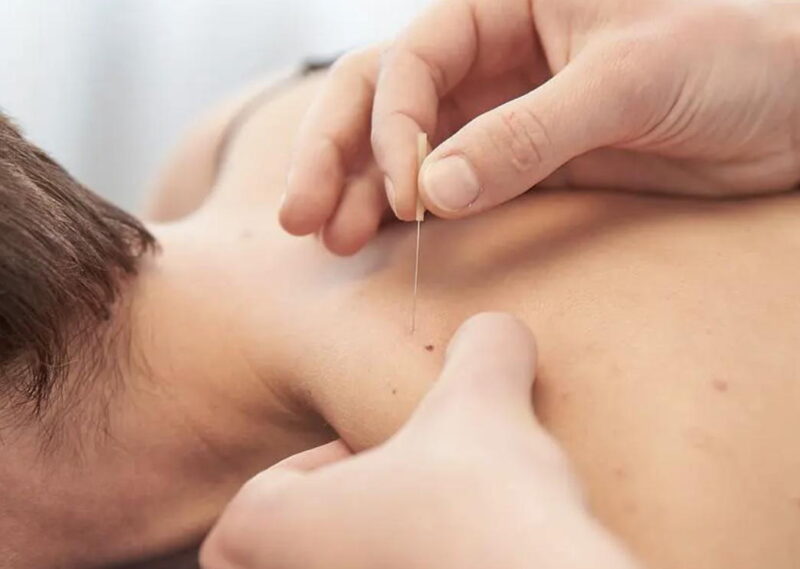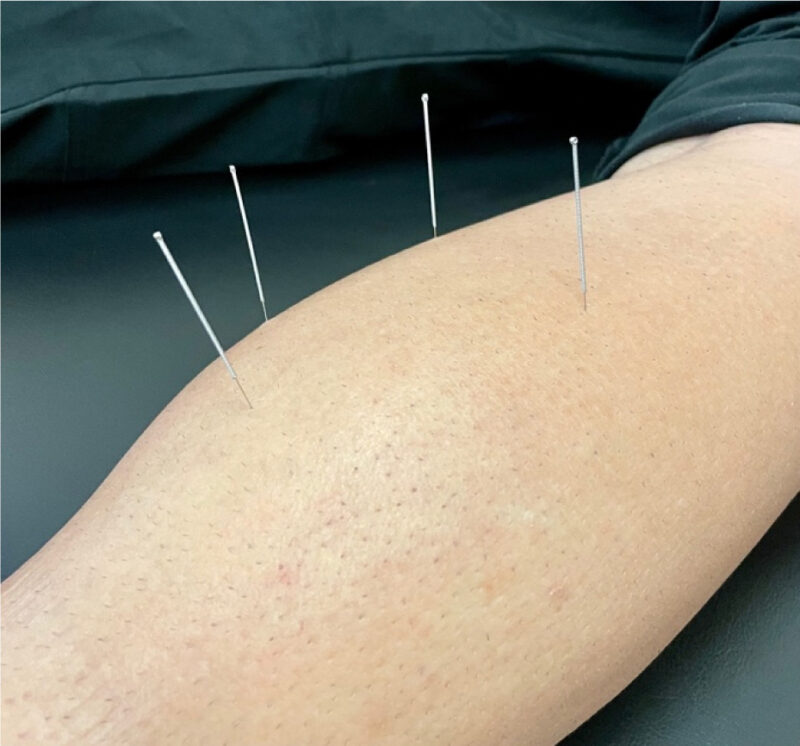The Tiny Needle: Use Dry Needling to Calm Your Nervous System and Accelerate Healing
Have you been curious about dry needling but hesitant to try it? As I mention in this Instagram post, about 82% of people respond positively to this therapy – and there’s fascinating science behind why it’s so effective, particularly for calming your nervous system and boosting healing.
What exactly is dry needling?
Dry needling involves inserting thin filiform needles into specific trigger points in your muscles. The needles are called “dry” because they don’t inject any substance. These trigger points are tight bands in a muscle that develop due to injury, overuse or stress. Trigger points can cause pain to radiate or spread to other areas of the body, making it more complicated to detect the cause of pain.

The nervous system connection: why it works so well
One of the most powerful yet lesser-known benefit of dry needling is its effect on your nervous system. Here’s what happens:
- Parasympathetic activation. When the thin needle penetrates a trigger point, it creates a micro-trauma that stimulates your body’s natural healing response. This process includes activating the parasympathetic nervous system – your body’s “calm mode”. Research shows that dry needling helps normalize autonomic nervous system function, which is particularly beneficial if you’re dealing with chronic stress, anxiety, or pain that keeps your body stuck in “fight or flight” mode. The therapy essentially helps your body shift gears from constant alertness to a calmer, healing-focused state.
- Endorphin release: your body’s natural pain relievers. Studies reveal that dry needling increases the release of endorphins and enkephalins – your body’s innate painkillers. This mechanism not only helps reduce pain but creates a sensation of wellbeing and deep relaxation.
- Breaking the pain-tension cycle. Chronic pain often creates a vicious cycle: pain leads to muscle tension, which causes more pain. Often this is followed by changes in movement patters to avoid using painful muscles, which can lead to overuse of other muscles. Dry needling helps break this cycle by:
- Releasing tight muscle bands
- Reducing local and central sensitization to pain
- Calming overactive pain signals in the nervous system
- Restoring normal movement patterns.
Accelerated healing: how dry needling boosts recovery
Improved Blood Flow
When the needle penetrates the tissues, it stimulates vasodilation (widening of blood vessels). This brings:
- Increased oxygen to tissues
- Enhanced delivery of nutrients
- More efficient removal of waste products
- Reduced inflammation.
Tissue regeneration
- The microtrauma created by the needle stimulates your body’s natural healing processes at a cellular level. Growth factors, which are proteins that play a crucial role in tissue repair, are released.

Neurophysiological benefits
Research indicates that dry needling promotes homeostasis at trigger points and decreases both central and peripheral sensitization to pain. In simpler terms, it helps “reset” your nervous system’s pain response, allowing for decrease of pain and more normal functioning.
Who benefits most from dry needling?
Dry needling suits most people but is particularly effective for:
- Those with chronic muscle tension, for example tennis elbow or plantar fasciitis
- Patients with long-term joint pain like knee osteoarthritis
- Athletes seeking faster recovery
- People experiencing stress-related muscle issues
- Individuals with overactive sympathetic nervous systems (often manifesting as anxiety, poor sleep, or digestive issues).
What to expect during a session
- An assessment to identify problematic trigger points
- Brief insertion of thin needle(s) into specific area(s)
- Possible controlled and subtle moving the needle (by the therapist) in the trigger point to further amplify the results
- Usually a massage followed by the needling to further relieve tension
- A sense of deep relaxation during and/ or after the treatment
- Often a very good sleep at night following the treatment 🥱😴
- Occasionally mild soreness for 24-48 hours, followed by significant improvement.
The bottom line
As a therapist who regularly uses dry needling, I’ve seen remarkable results in my clients how it relieves pain, calms the nervous system and accelerates healing. The science backs up what I observe in practice – this minimally invasive technique offers a powerful way to address both the symptoms and underlying causes of pain and tension. Unlike drugs that can irritate stomach or have other side effects, this one’s totally “organic” and comes without side effects.
Next time you experience a dry needling session, take a moment to notice not just how your treated muscle feels, but how your entire body responds. You might discover improvements in areas you never expected—from better sleep to improved digestion, reduced anxiety, and an overall sense of balance and wellbeing.

Have you tried dry needling? I’d love to hear about your experience!
Sources
https://www.tucsonsportsrecovery.com/what-does-dry-needling-actually-do
https://www.physio-pedia.com/Dry_Needling